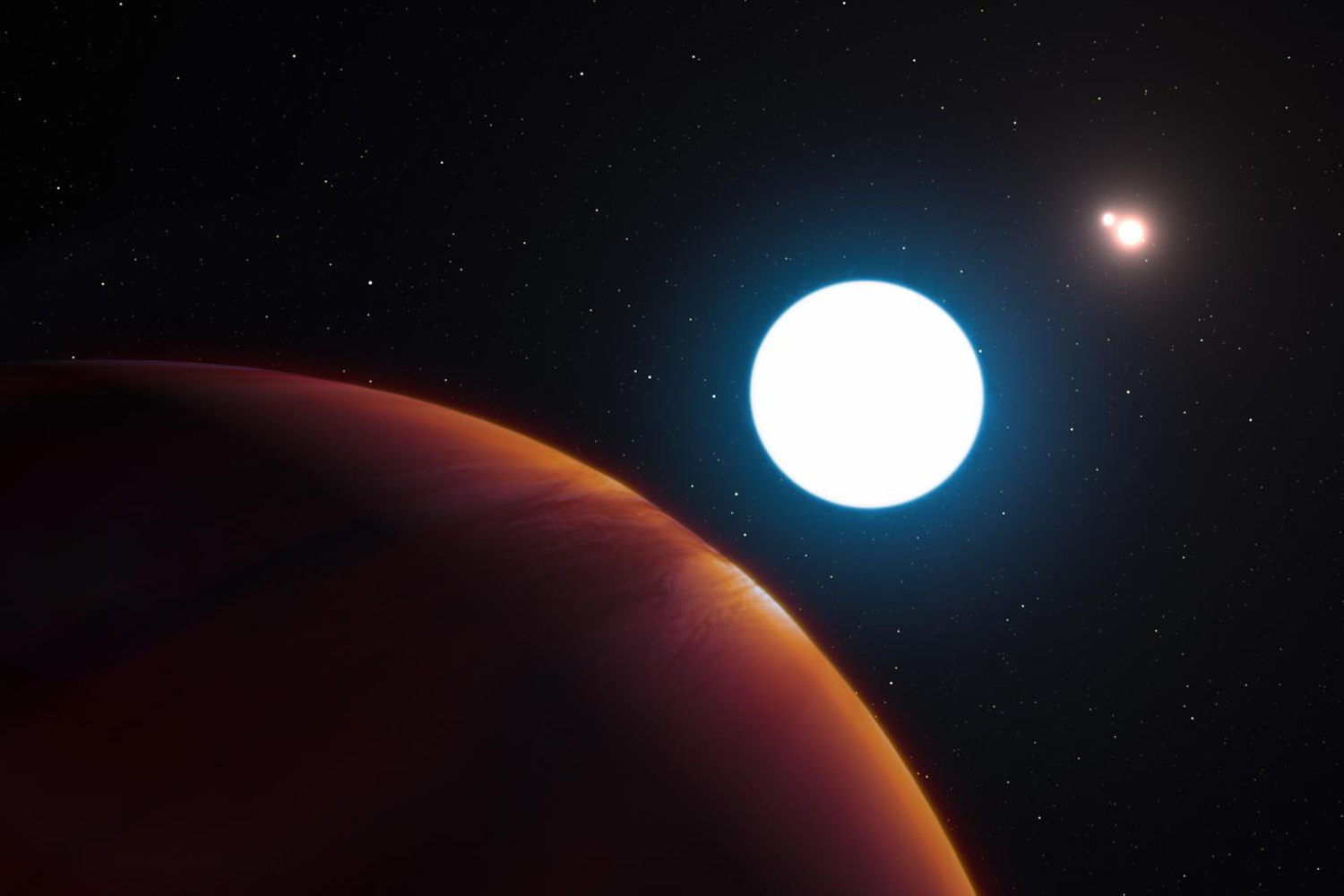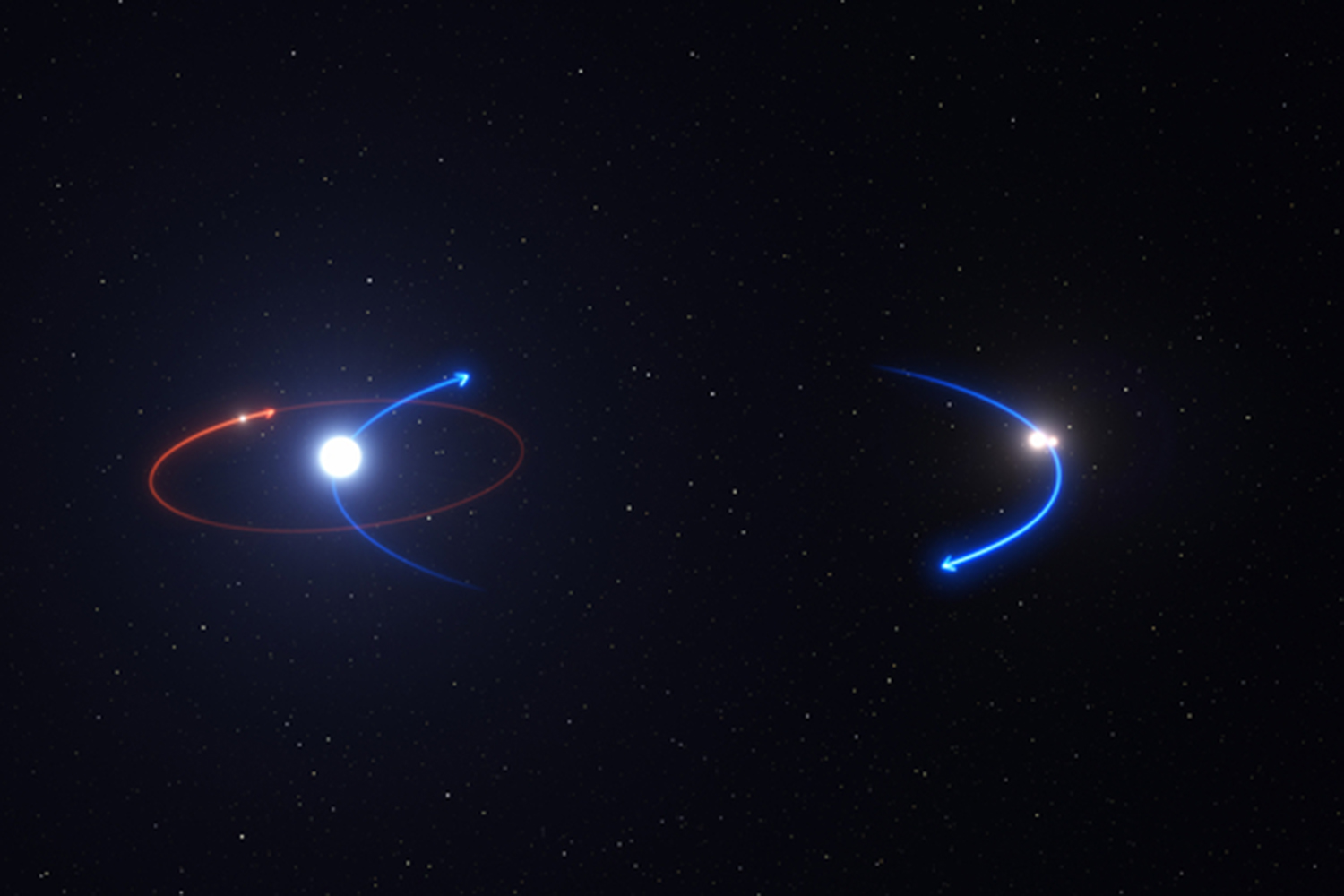HD 131399Ab is unlike any known world, according to a paper by astronomers led by a team from the University of Arizona, published yesterday in the journal Science. It’s unusually young for an exoplanet and surprisingly cold as well. The planet’s orbit is huge — about two times the distance of Pluto’s orbit around the Sun. And though it has about four times the mass of Jupiter, HD 131399Ab is one of the least massive exoplanets ever discovered via direct imaging.
But it’s ultimately the star system that makes this discovery so spectacular. HD 131399Ab orbits star A, which is about 80 percent more massive than our sun. Meanwhile, star A and the exoplanet are orbited by two smaller stars, B and C, which in turn twirl around each other. This results in occasional triple sunsets and sunrises amid 140-year periods of nearly perpetual sunlight, as one sun’s rise coincides with the others’ setting.
Still, these seemingly spectacular sunsets and life-long seasons aren’t what make the discovery so special.
“What makes this the only system of its kind…is the relative separation between the planet and the stars. Of the other known planets in multi-star systems, each of the planets orbits so close to one of the stars that it is much more physically similar to the scenario of a planet orbiting a single star,” Kevin Wagner, the first-year PhD student who discovered the planet, told Digital Trends.
“This extreme configuration puts the planet just on the boundary of being stable, which we think is much more rare, and we aren’t quire sure yet how this system formed and evolved into its present configuration,” he added. Though computer simulations have depicted the current orbital scenario as stable, Wagner suggests that slight alterations would quickly disrupt it. He and the other astronomers will perform follow-up observations to determine how long the unique system may remain intact. They also hope to revisit other multi-star systems whose dynamics they thought were too extreme for planets to exist.
Multi-star systems may seem rare but they’re actually as common as single-star systems such as our own. By studying these systems, astronomers hope to unravel the origins and mechanics of other systems.
“Since there are so many multi-star systems, understanding what types of planetary systems exist around multiple stars is just as important as understanding planets around single stars if we want to build a complete picture of what types of planets exist in our galaxy and which ones might harbor life,” Wagner said.




